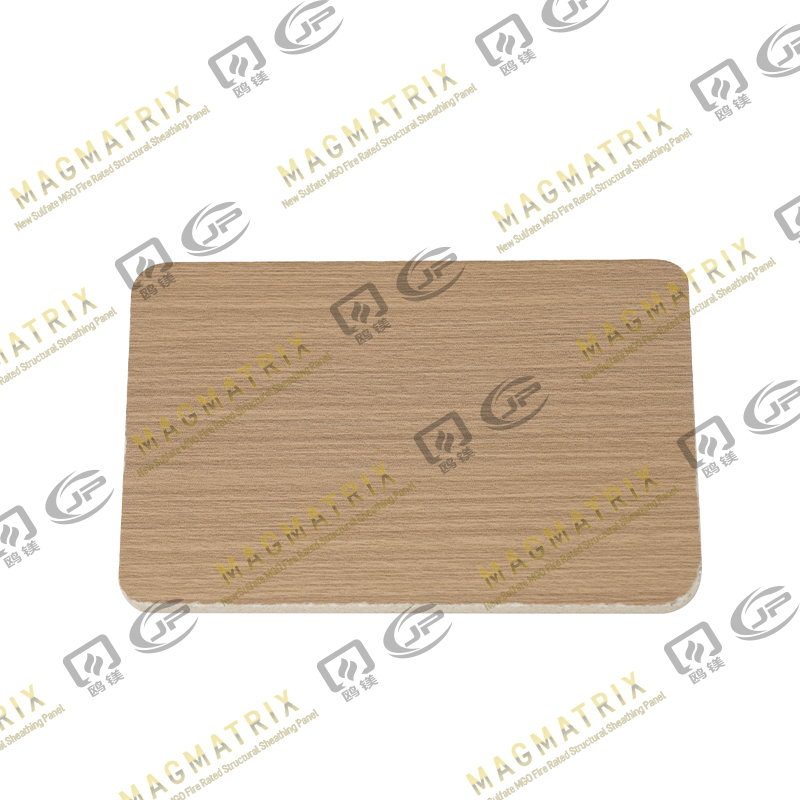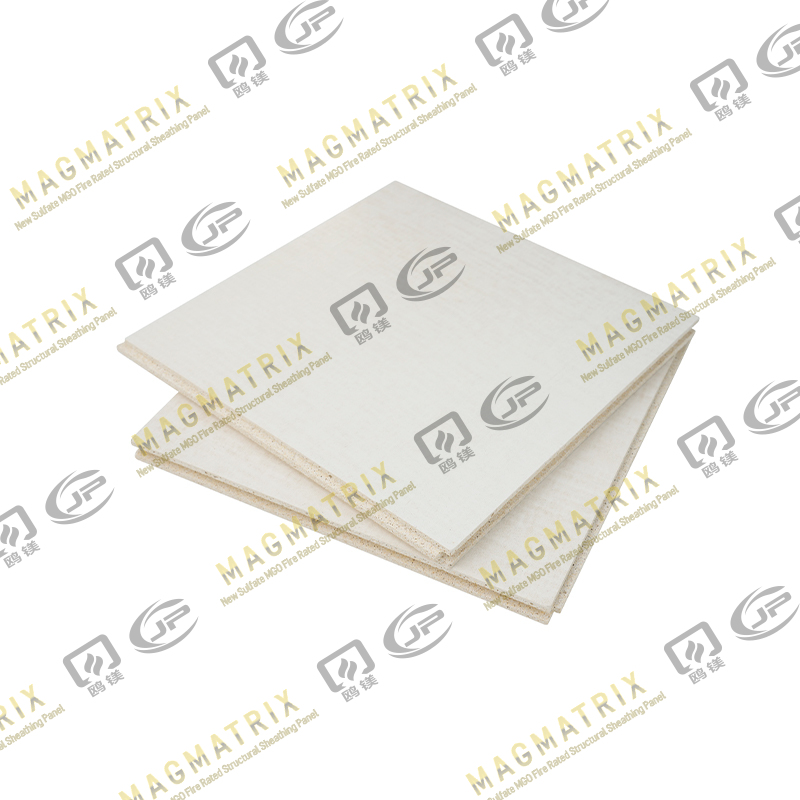Key Takeaways
Magnesium wall board, also known as magnesium oxide (MgO) board, does not release toxic gases when on fire. This inorganic, non-combustible building material is an excellent choice for fire-resistant construction because it can withstand high temperatures without burning, melting, or emitting harmful fumes.
Here's why magnesium wall board stands out as a safe, fire-resistant option:
Non-Combustible: Unlike organic materials such as wood, MgO board does not fuel a fire. Its composition allows it to maintain its integrity under extreme heat.
Toxin-Free: Because it is made from inorganic compounds (primarily magnesium oxide), it doesn't contain the volatile organic compounds (VOCs) or other chemicals that release toxic gases or dense smoke when exposed to flames.
Low Smoke Emission: In addition to being toxin-free, MgO board produces minimal to no smoke when subjected to fire, which is critical for visibility and occupant safety during an emergency.
Fire Performance
Non-Combustibility of Magnesium Wall Board
Magnesium wall board, or magnesium oxide (MgO) board, is an inherently non-combustible material. Unlike wood or other organic building materials, it is not a fuel source and will not burn. The board's primary components are inorganic minerals, mainly magnesium oxide and magnesium chloride. This mineral-based composition is the key to its exceptional fire resistance, as these materials do not ignite when exposed to fire.
In formal fire safety testing, such as European Standard EN 13501-1, MgO board is often given a Euroclass A1 rating, which is the highest classification for non-combustible materials. This means it contributes nothing to a fire, even under full-scale testing conditions.
Behavior Under High Heat
The performance of magnesium wall board under high heat is a significant safety advantage. Instead of burning or melting, the board's behavior can be described in two key ways:
Exceptional Heat Resistance: MgO board can withstand extremely high temperatures, often up to 1,200°C (2,192°F), without losing its structural integrity. This high heat tolerance is a stark contrast to materials like gypsum board, which can start to disintegrate at much lower temperatures.
Heat Absorption: The board contains hydrated minerals that release water molecules in the form of steam when exposed to high heat. This process, known as dehydration, is endothermic, meaning it absorbs energy from the fire. This absorption of heat slows down the temperature rise on the unexposed side of the wall, providing a critical time delay for fire and smoke spread, and allowing for safer evacuation. This property acts as a built-in fire retardant.
Toxicity and Smoke Emission
Toxin-Free During Fires
A key safety advantage of magnesium wall board is its non-toxic composition. The material is predominantly made from inorganic compounds—magnesium oxide and magnesium chloride—which do not release hazardous gases when exposed to fire. Unlike many other building materials that can contain plastics, resins, or other organic polymers, MgO board is free of these components. When these organic materials burn, they undergo chemical reactions that produce a range of toxic gases, including carbon monoxide, hydrogen cyanide, and various acid gases. Because MgO board lacks these organic materials, it does not produce these dangerous byproducts.
No Harmful Gases or VOCs
Magnesium oxide board is also known for having zero Volatile Organic Compounds (VOCs). VOCs are carbon-containing chemicals that can easily become vapors or gases and are a major source of indoor air pollution, even at room temperature. In a fire, materials that contain VOCs can release these compounds at an accelerated rate, along with other harmful gases. Since MgO board's base materials are entirely inorganic, it contains no VOCs. This makes it a healthier choice for building occupants on a daily basis and, more importantly, ensures that it does not contribute to the toxic fumes that are often the leading cause of death in fires. The absence of these harmful emissions means that the smoke produced, if any, is minimal and non-toxic, greatly improving visibility and air quality during an emergency.
Material Comparison
Comparing magnesium wall board to other common building materials highlights its superior fire performance and safety benefits. While other materials may have fire-resistant properties, they often fall short in key areas like smoke and toxicity, which are critical for occupant safety.
Magnesium Wall Board vs. Gypsum
Gypsum board, commonly known as drywall, is widely used for fire resistance due to its water content, which is released as steam when heated, similar to MgO board. However, there are significant differences:
Toxicity and Smoke: While gypsum board is fire-resistant, its paper facing and certain additives can burn, producing smoke and releasing some toxic gases. In contrast, magnesium wall board is inorganic and contains no paper facing, resulting in minimal to no smoke and zero toxic emissions.
Moisture and Durability: Gypsum board is susceptible to water damage and can lose its structural integrity when exposed to moisture, making it prone to mold and mildew. Magnesium wall board is highly moisture-resistant and will not swell, rot, or degrade in the presence of water.
Magnesium Oxide Board vs. Cement Board
Cement board is a durable, water-resistant material used in areas like tile backer boards. It offers good fire resistance but generally does not perform as well as magnesium oxide board in fire scenarios:
High-Temperature Performance: While cement board can achieve fire ratings, it can sometimes crack or have explosive failures under extreme heat. MgO board is known for maintaining its structural integrity and dimensional stability even at very high temperatures.
Weight and Installation: Cement board is significantly heavier and more difficult to cut and install than magnesium wall board, which is lighter and can be scored and snapped easily, making for a faster and less labor-intensive installation.
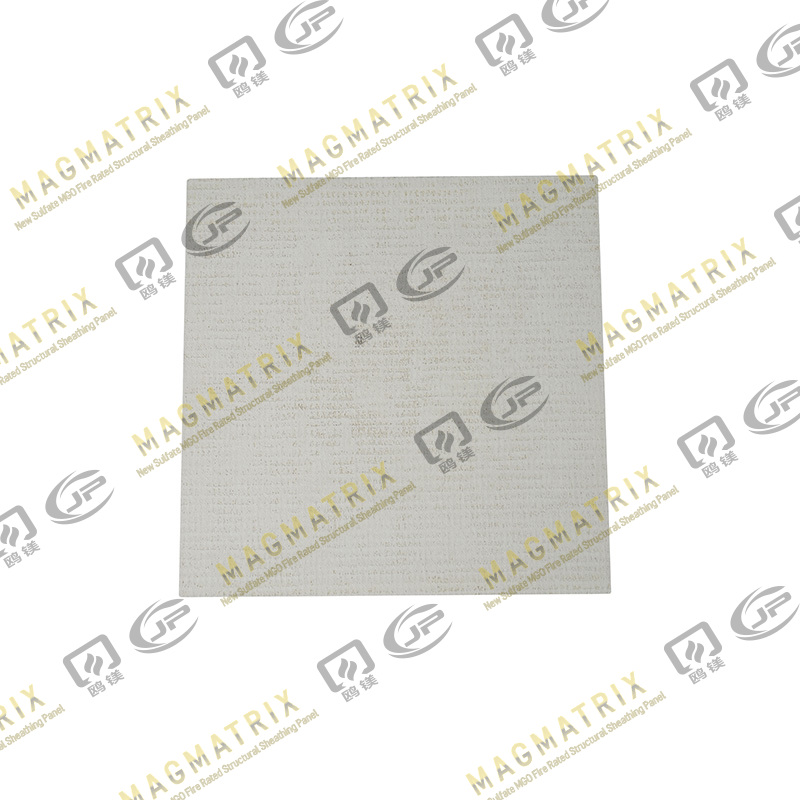
Wood and Smoke Production
The comparison to wood is where the advantages of magnesium wall board are most pronounced. Wood is an organic material that is highly combustible and acts as fuel for a fire. When wood burns, it releases a high volume of dense, black smoke and a host of toxic byproducts. The contrast in performance between these materials is stark:
| Feature |
Magnesium Wall Board |
Gypsum Board |
Wood |
Cement Board |
| Combustibility |
Non-combustible |
Non-combustible (with flammable paper) |
Combustible |
Non-combustible |
| Toxic Gas Release |
None |
Potential from paper/additives |
High |
None |
| Smoke Production |
Minimal to none |
High from paper facing |
High, dense smoke |
Minimal |
| Moisture Resistance |
High |
Low |
Low |
High |
| Weight |
Lightweight |
Medium |
Varies |
Very Heavy |
This table clearly illustrates why magnesium wall board is a superior choice for applications where fire safety, low toxicity, and reduced smoke emissions are paramount.
Certifications and Test Results
The fire safety and non-toxic properties of magnesium wall board are not just theoretical; they are backed by rigorous testing and certifications from leading international and national standards organizations. These certifications provide a trusted, third-party validation of the material's superior performance in fire events.
Fire Safety Standards
Magnesium wall board consistently meets and often exceeds the most stringent fire safety standards globally. Key certifications include:
ASTM International: In the United States, MgO board is tested under standards such as ASTM E119, which evaluates the fire-resistance rating of building constructions, and ASTM E84, which measures surface burning characteristics, including flame spread and smoke development. MgO board typically achieves the highest Class A rating for both.
European Union (EU): The European standard EN 13501-1 classifies the fire performance of construction products. MgO board is frequently certified with an A1 rating, which is the highest possible classification for non-combustible materials, meaning it does not contribute to a fire's growth.
NFPA (National Fire Protection Association): MgO board complies with NFPA standards, which are widely adopted across the U.S. and around the world to reduce fire risk. The material's non-combustible nature and lack of smoke production align perfectly with NFPA's goals for safe building practices.
Laboratory Findings on Toxicity
Beyond fire resistance, laboratory tests have specifically focused on the toxicity and smoke density of materials under fire conditions. The results for magnesium wall board are consistently favorable:
Low Smoke Density: Tests like ASTM E662 measure the specific optical density of smoke from a burning material. MgO board produces extremely low to zero smoke, a critical factor in fire emergencies where smoke inhalation is a leading cause of death.
Non-Toxic Gas Emissions: Specialized toxicity tests confirm that MgO board does not release harmful gases like carbon monoxide (CO), hydrogen cyanide (HCN), or sulfur dioxide (SO2) when heated. These findings directly support its use in applications where occupant safety is a priority, such as schools, hospitals, and high-rise buildings. The inorganic composition of the board is the primary reason for these positive results, as there is no organic matter to combust and create toxic byproducts.
FAQ
What makes magnesium wall board a good fire-resistant building material?
Magnesium wall board is a good fire-resistant material because of its non-combustible nature. Its inorganic composition, primarily magnesium oxide, means it will not ignite or burn when exposed to fire. Instead of fueling a fire, it retains its structural integrity and can even help absorb heat, delaying the spread of flames and protecting the building's structure.
Does magnesium oxide board release toxic gases or fumes during a fire?
No, it does not. Magnesium oxide board is entirely inorganic and contains no volatile organic compounds (VOCs) or other chemicals that would produce toxic gases or dense smoke when subjected to high heat. Its pure mineral composition ensures that the material remains inert and non-toxic, which is crucial for occupant safety in an emergency.
How does magnesium wall board help with reduced smoke and toxicity?
Magnesium wall board helps by eliminating the source of smoke and toxins. Most smoke and toxic fumes in a building fire come from the combustion of organic materials like wood, plastics, and paper. Since MgO board has no organic components, it does not burn or smolder, thereby preventing the release of harmful byproducts and keeping evacuation routes clearer and safer.
Can magnesium wall board be used in fire-resistant panels for high-risk areas?
Yes, absolutely. Due to its exceptional fire resistance, non-toxic properties, and structural stability, magnesium wall board is an ideal material for creating fire-resistant panels. It is commonly used in high-risk areas such as commercial kitchens, industrial facilities, hospitals, and any location where fire safety is a critical concern for both people and property.
Why is the importance of fire-resistant building materials so high for health and safety?
The importance of fire-resistant building materials is paramount for health and safety because they directly impact survivability in a fire. They slow the spread of flames, which allows more time for safe evacuation. Additionally, materials that do not release toxic gases or dense smoke are vital, as smoke inhalation is the leading cause of death in building fires. Using safe, fire-resistant materials saves lives, reduces property damage, and ensures a safer environment for everyone.
Conclusion
Magnesium wall board represents a significant advancement in building material safety. Its performance under fire conditions demonstrates a clear superiority over traditional materials, not only in terms of fire resistance but also in the crucial aspects of toxicity and smoke emission. By being non-combustible, non-toxic, and producing virtually no smoke, MgO board protects building occupants from the two greatest threats in a fire: flames and the inhalation of toxic fumes. As the construction industry continues to prioritize health and safety, magnesium wall board stands out as a reliable and effective solution for creating safer, more resilient structures.
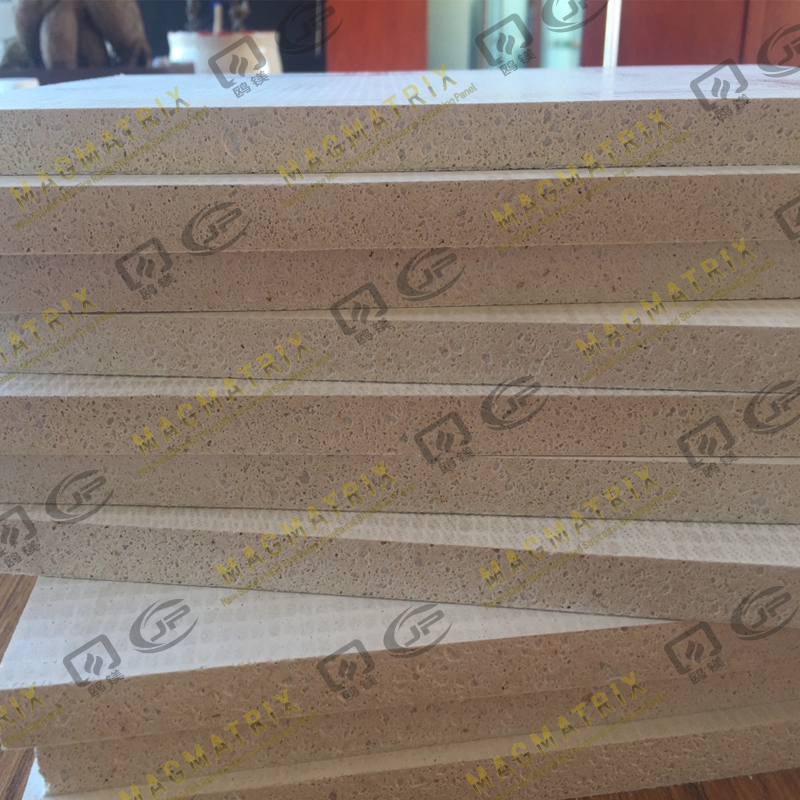 BMSC 517 New Sulfate MgO Board
BMSC 517 New Sulfate MgO Board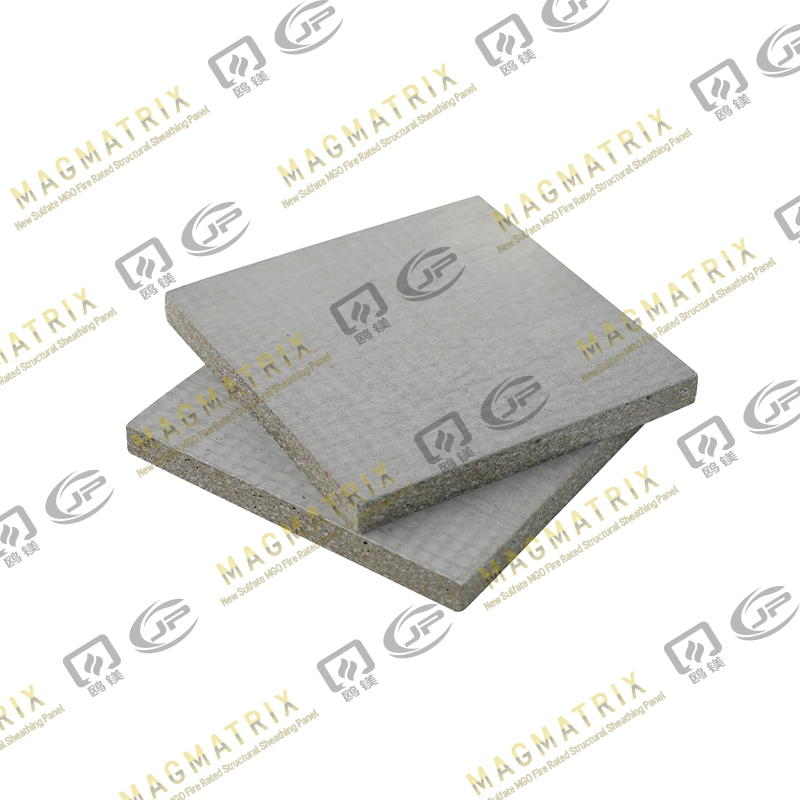 Multi-Support MgO Wall Sheathing Board
Multi-Support MgO Wall Sheathing Board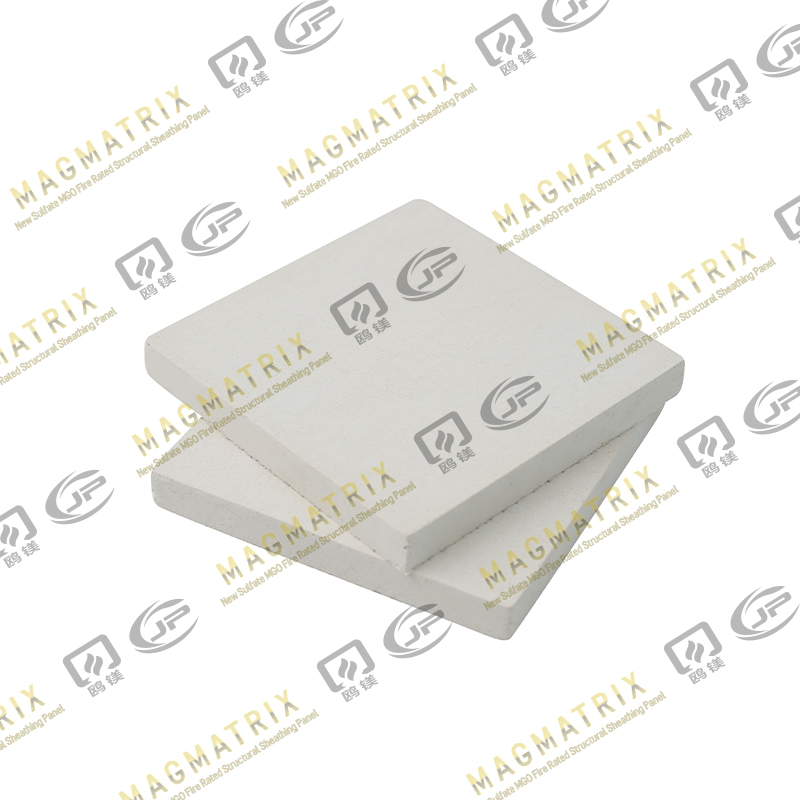 Perseverance MgO Wall Sheathing Board
Perseverance MgO Wall Sheathing Board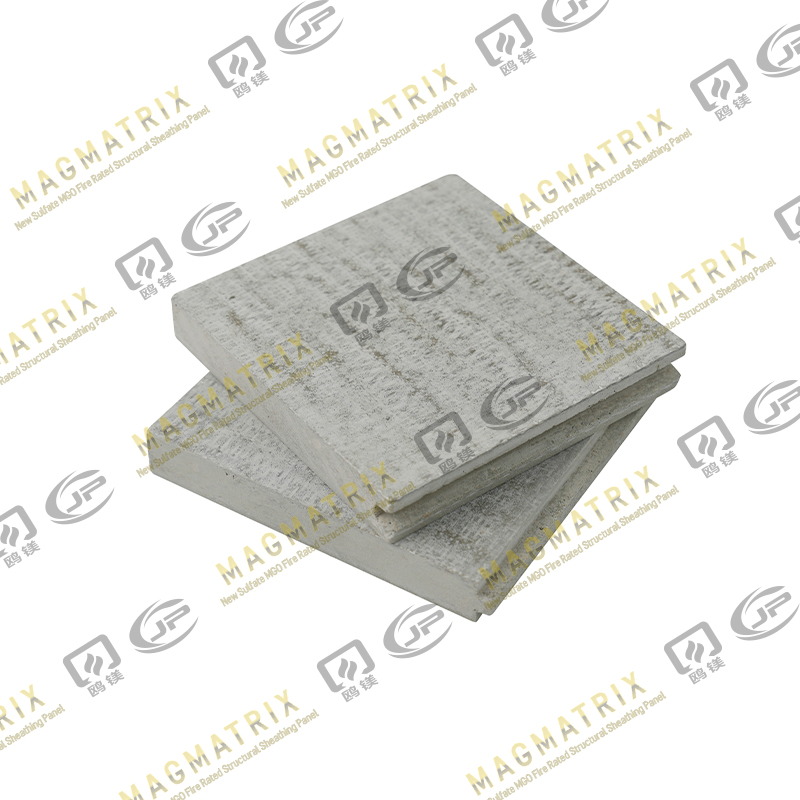 Multi-Support MgO Subfloor Sheathing Board
Multi-Support MgO Subfloor Sheathing Board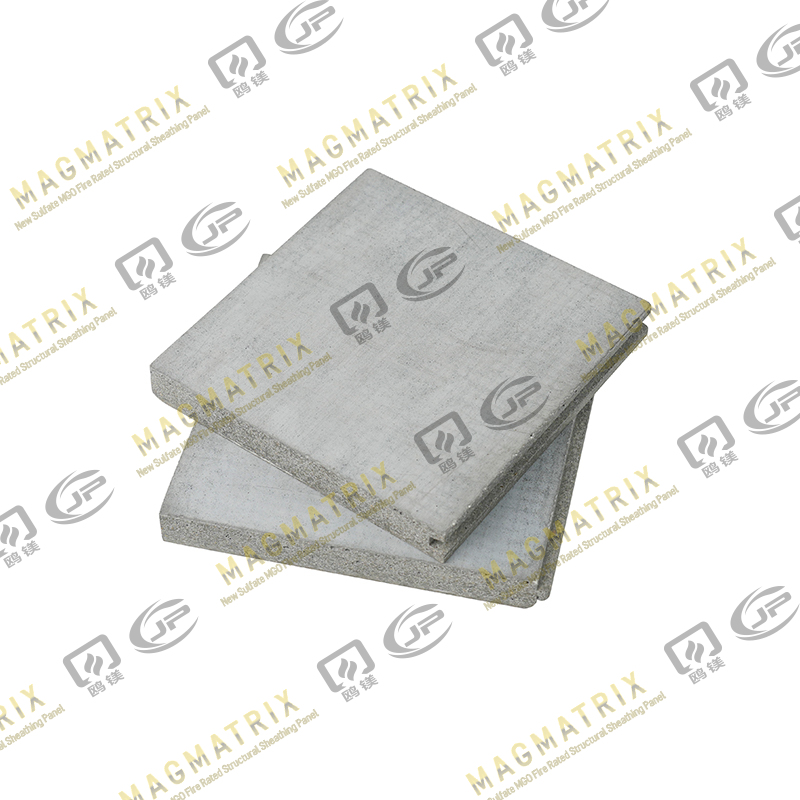 Perseverance MgO Subfloor Sheathing Board
Perseverance MgO Subfloor Sheathing Board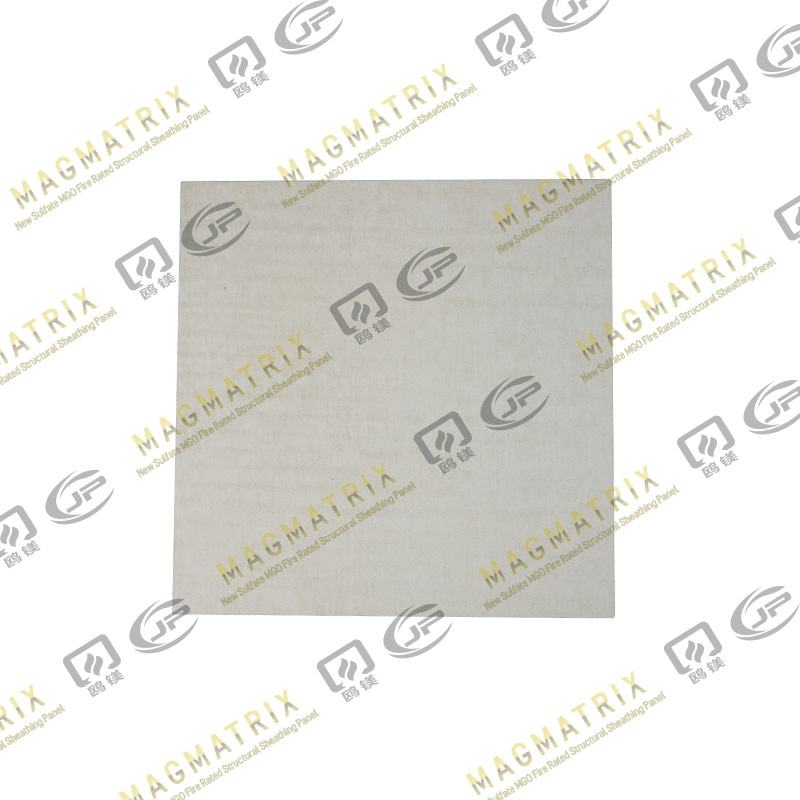 MagMatrix MgO Underlayment Panel/board
MagMatrix MgO Underlayment Panel/board


 English
English русский
русский Español
Español
